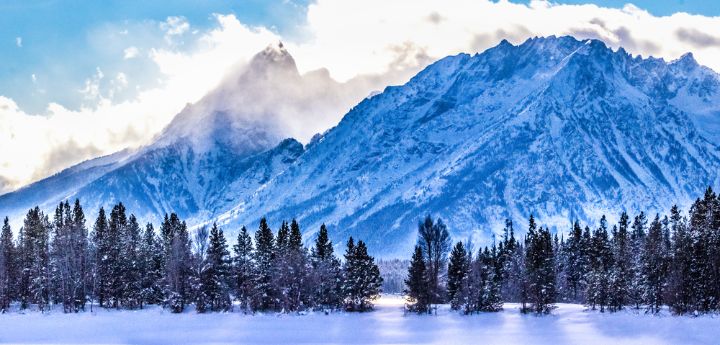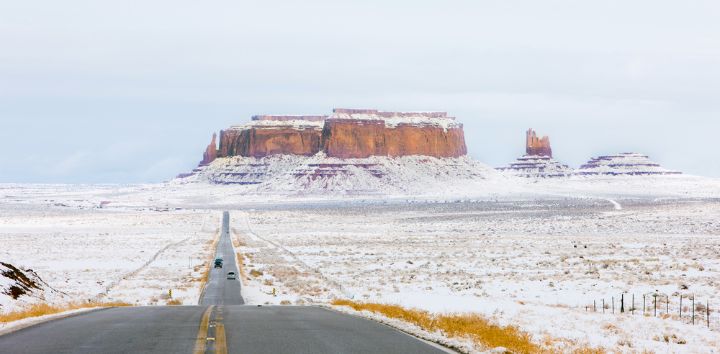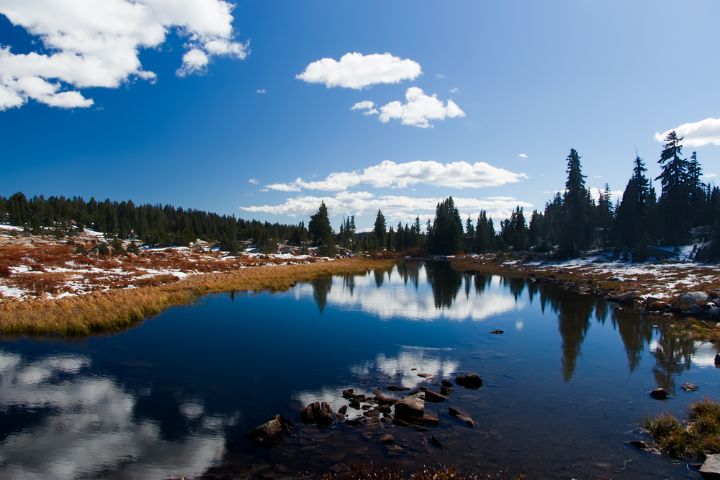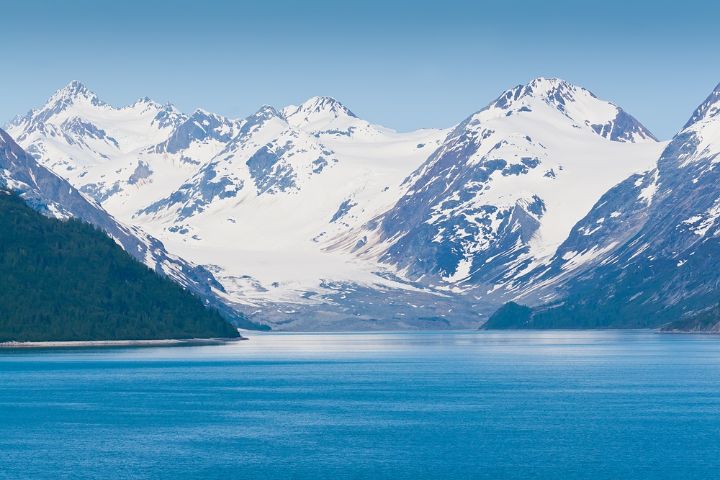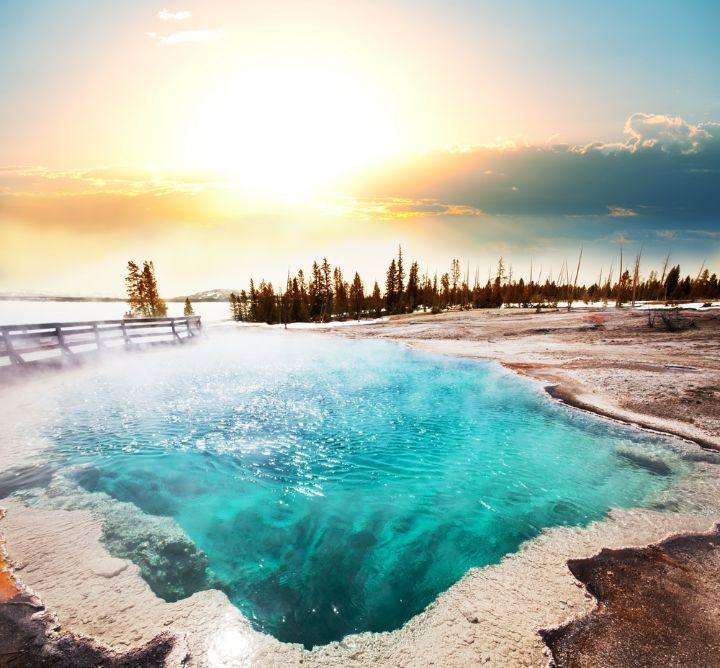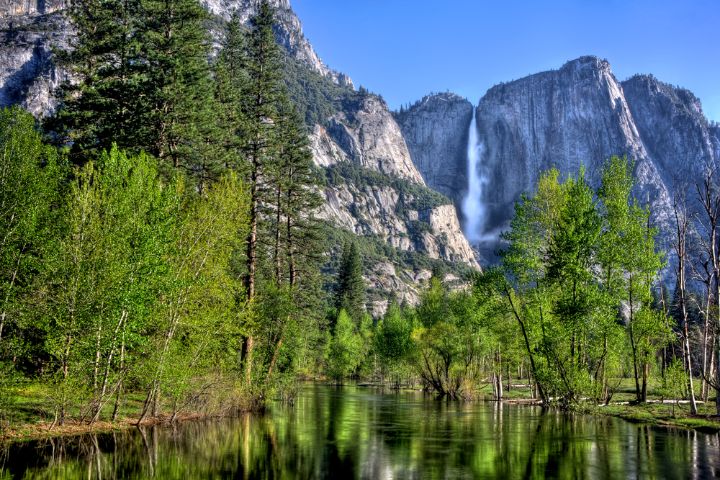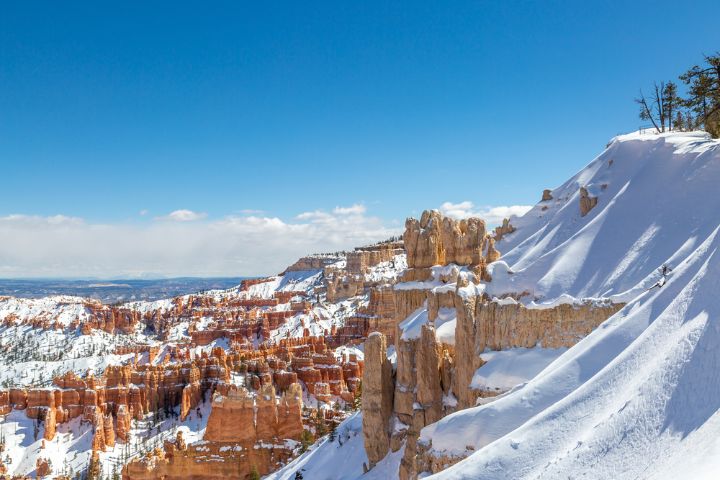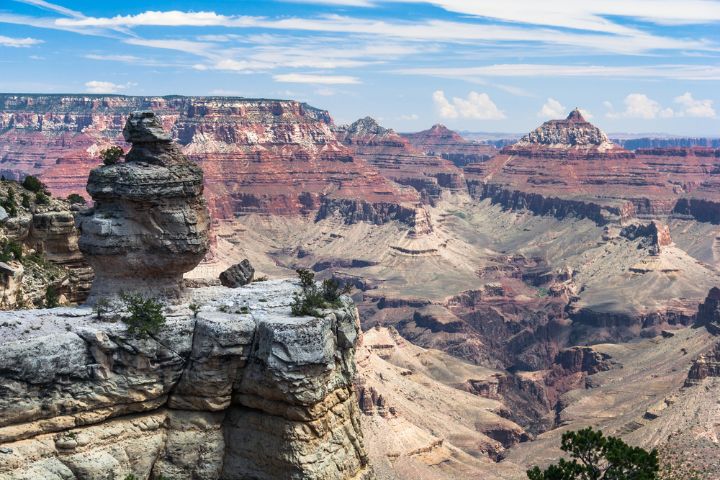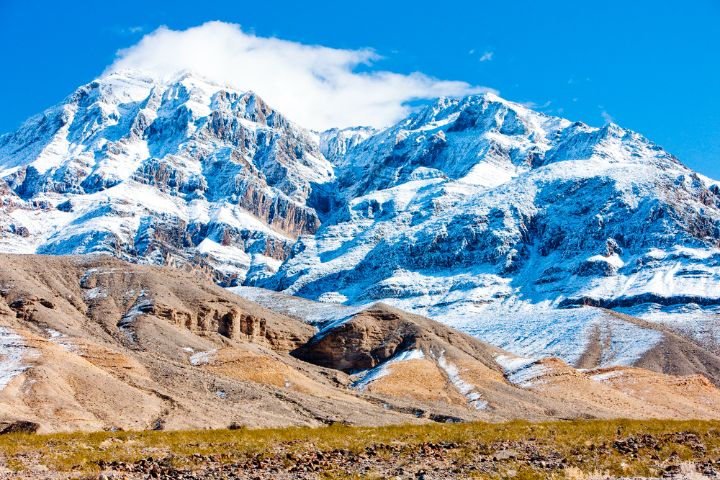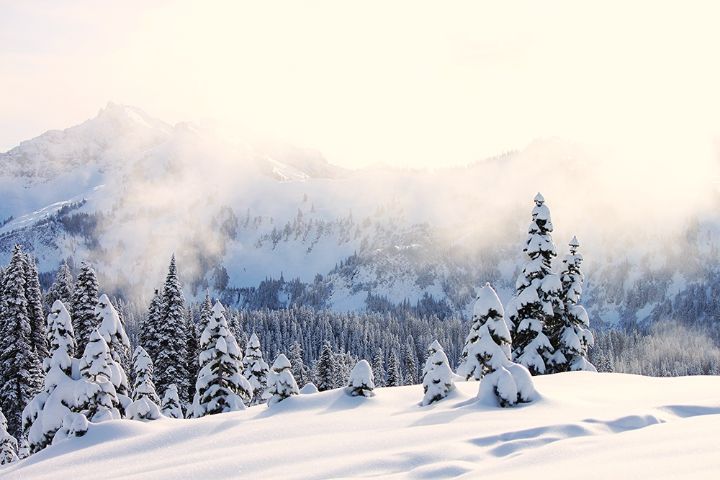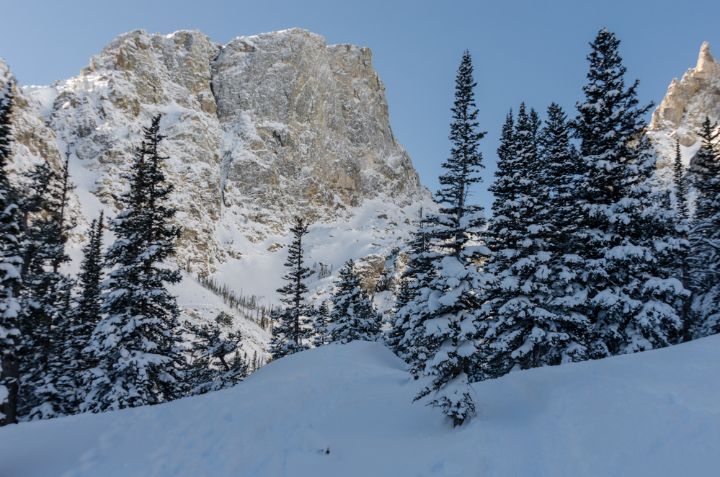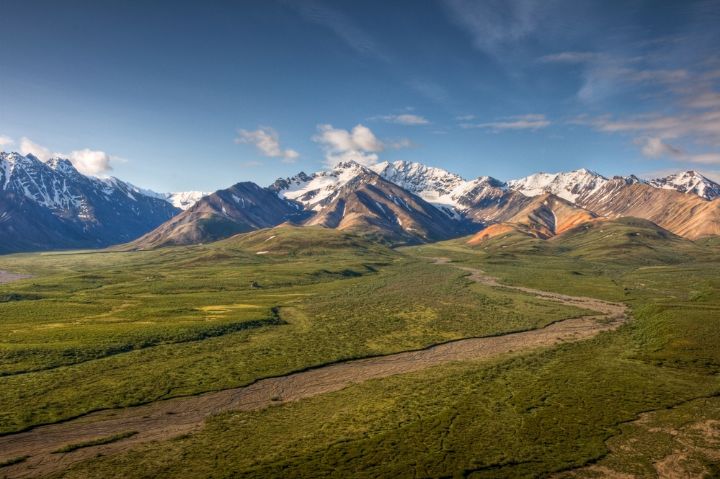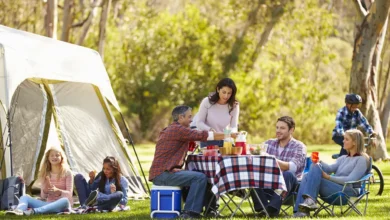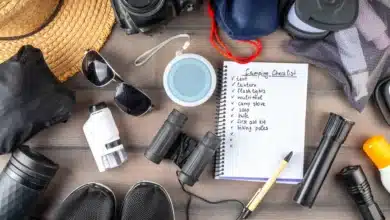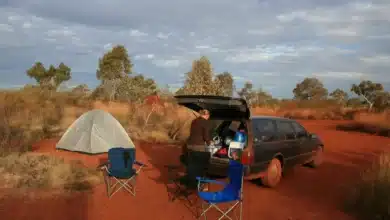Winter is Coming!
Remember the immortalized dialogue from GOT? Well, the winter of 2021 is just a few months away. The global pandemic is at its last wing, thanks to the massive vaccine drive worldwide. So, isn’t it the perfect time to prepare for a nice cozy winter vacation?
What can be better than winter camping and exploring National parks while flaky white snow keeps drizzling all around? But winters are notorious for shutdowns, sudden snowfall, and of course park maintenance shutdowns.
So, are national parks open in the winter? The answer is yes, many of them are. In fact, reports suggested that winter visitation last year for national parks was the highest in decades.
The next question that probably is hovering in your mind is the confusion to choose the perfect one to visit this winter, among so many beautiful National Parks. Right?
Winter Camping in a National Park: Things To Know Before You Go
While the idea of winter camping seems like it will be all about lots of fun and adventure, there are small details one must take note of and prepare for.
Research well before going
National Parks have thousands of miles of area coverage. Snow-clad winter landscapes can be confusing to explore. Updated maps and guides aside, it is best to learn about the probable animal terrains if you want not to face wolves, snakes, and bears on unknown trails. Researching about the park will also give you a better idea of what is open to exploring during the winter months.
Secondly, enquire if the national park closes for the winters before even choosing. Once decided, call ahead before going because national parks close down temporarily, sometimes during winters, and it would be a bummer to go to the park after a long drive and find that the place is not accepting visitors.
Figure out the weather forecast
In some places, the temperatures can fall upto below -40, so make sure you know how the weather is expected to be for the duration of your trip. And even so, always pack those large thermal jackets just in case.
You may also like – How to Poop in the Woods… in Winter
Guided Tours and Lectures
There are many national parks that offer tour guides and lectures on the history and important aspects of the park. But don’t always assume that this is going to be the case. Always plan ahead and learn about the park before going.
Plan well and Plan ahead
Boarding and lodging are readily available in all the national parks. However, most of the hiking trails and trek routes are void of any facilities or shops. Dehydration, hunger, and nausea can happen at any time. Another dangerous scenario is hypothermia, which can be a perilous and life-threatening situation.
You should always carry a Thermal mini blanket, water, first aid kit, minor medication for pain and nausea, protein bars, nuts, and fruit juice, etc., in a small backpack. Invest in a good and sturdy pair of all-terrain boots and warm woolen socks to prevent heat loss through the feet.
Reach Early
You don’t want to end up standing in line all day, waiting for entry to the park. Secondly, during the winters, the evening can get really chilly, so enjoy the park while it’s still warm in the afternoon. Lastly, keep a check on the daylight. Daylight can fade away pretty quickly in the winter, so arriving early is always a good idea.
Check for Christmas, Thanksgiving, and New Years
Many national parks are closed for Christmas and New Year. Call ahead or check it out on their websites before you plan to make it a camping holiday on these days.
Get your permits
Make sure to have the permits and slips updated and nearby at all times – the national parks are very strict about the permits and tickets. It is a punishable offense if you are unable to produce the requisite documents when asked for them by any person of authority.
Respect the land
It takes much effort to maintain the well-being of the national parks. Littering is strictly prohibited. As a socially responsible being, ensure to never leave behind anything that could harm the environment.
Invest in good snow gear
While many prefer carrying their gear, the majority likes to rent snow gear from the lodges and rental places in the park. Instead of choosing flashy and cheap gears, ensure to opt for a sturdy fit and is of good quality. Check carefully for dents, cracks, tears, and chipped-out sections before renting the equipment.
Layer your warm clothing well
Get your thermals, innerwear, and sweaters in place to prevent loss of heat quickly. Layering is especially helpful during night camping outside when the temperatures can fall very rapidly and your heaters may not be sufficient to protect you from the cold.
Know the rules of camping
If you are planning to stay at a camping ground, learn about the guidelines and rules to follow. Many National Parks have designated the amount of power supply and water supply allocated for every individual camper based on a few criteria. The community prefers adjusting and maintaining a lifestyle around these schedules and supply volume. In case your RV or Camper requires more power or water, informing the Park ground authority beforehand is important.
You may also like Sleeping In Your Car At A Campground
10 Best National Parks To Explore This Winter
Winters are perfect for exploring National Parks for a reason. Autumn leaves behind dry and thinning trees all around, while winter brings in the snow. The absence of too much leafy surrounding and the ethereal white surrounding gives us miles of a clear panoramic view.
This winter, choose to explore one of them from among the 12 most beautiful national parks of the United States.
#1. Yellowstone National Park
Despite the chilling weather, Yellowstone National Park is a sight to behold in winter. Ethereal and mystical, it is devoid of a crowd as winter is off-season. Accessible via snowmobile, the Mammoth Hot Springs is worth taking a dip in a while enjoying the sight around.
The Old faithful Geyser shooting up as high as 100 meters into the sky is also another exciting option to explore. However, be ready to see a few uninvited but harmless wild guests like Moose, Bisons, Elks, and even wolves once in a while enjoying the scenery around from your doorstep.
Things to explore during winter:
Winter Safari, WIldlife photography, and even cross country skiing are some of the options to explore if watching geysers and dipping in Hot Springs isn’t enough.
Opting for Snowcoach Shuttle is a sage decision, in case you are interested in exploring the deeper section of the park without being scared.
Where to Stay:
As winter is off-season, there are only a few places that operate if you want to spend a few days exploring the park. Canyon Yurt Campsite, Old Faithful Lodge, Mammoth Hotel are a few well-rated choices.
Guided tours of the parks are also provided by these lodging sites, flooding, and even camping gear rentals.
Location:
Yellowstone
Entrance Fee:
Winter Park Entrance – 35$ for vehicle
$30 for two-wheelers
$20 for individual
Annual pass – $60 per vehicle with unlimited access
#2. Yosemite National Park
It is believed that Yosemite National Park completely changes itself with every season. The beauty of the summer spent at the National Park is entirely different from what you can expect in the Winters. Though the motorable road to the iconic Glacier Point remains closed during winter, there are many other ways to reach it.
Things to explore during winter:
Beautiful waterfalls like Bridalveil, granite cliffs of El Capitan and Half Dome, thousands of rare plant species, and animals aside, Yosemite is a beautiful remnant of the conflicting history of the past.
Geologically, one of the most diverse places to exist, the National Park is 1,200 square miles of pure bliss. The Ansel Adam Gallery and Yosemite Museum have carefully preserved the rich backdrop of the National Park and its tie with the aborigines, which are pretty interesting to learn about. Snowboarding and skiing aside, fishing at the Merced River is a great winter activity to look out for.
Where to stay:
Ahwahnee Hotel, Yosemite View Lodge, Autocamp Yosemite, Yosemite Riverside Inn, and Curry Village are some of the best-rated places to stay during winter vacation at the national park.
Remember that separate permits must be taken from the official website for day trips, overnight camping, in-park parking and camping, WIlderness trail, Half dome trek, and even group tours.
Location:
California
Entrance Fee:
Annual pass – $70
Weekly Pass – $35 per 4 wheeler
$30 per 2 wheeler
$20 per Individual
#3. Bryce Canyon National Park
If you want to enjoy a different kind of winter experience, the Bryce Canyon National Park is undoubtedly perfect. Beautiful orange-tinted miles of the landscape is covered with thousands of Hoodoos, the Spired shaped rocks, found nowhere else on the planet.
Notably, it is regarded as one of the best places for Stargazing on a cold winter night while camping amidst the desert terrain. If you are lucky, on a clear winter morning, you can see as far as the Arizona Mesas, some 200 miles away. Bryce Canyon is the best National Park to visit in January when it is completely covered in snow.
Things to explore during winter:
Exploring the park on horseback or hiking through the trails is an experience unlike any other. Dirt roads leading to some of the most beautiful Sunrise and Sunset points are some of the most swoon-worthy viewing spots of the country.
Quad biking through the Black Country Trail is exhilarating and perfect for the adventurous people who also want some peace of Mother Nature. The winter Astronomy Program and the Dark Ranger Night hike are two unique experiences one must never miss out on while winter camping at Bryce canyon.
The cross-country skiing and trails leading to Bryce Amphitheaters are other things to do during winter camping at Bryce Canyon.
Where to Stay:
Ruby’s Inn Compound, Bryce Canyon Resort, Bryce Pioneer Village, Bryce Canyon Pines are a few places open throughout the winter months. If hotels, inns, and resorts are not something you are looking for, then The Sunset Campground and the North Campground are perfect for RV, campers, and tents. Access to water, electricity, and sewer is available at the camping grounds and can be accessed on a rental basis.
Winter gears and shoes are readily available for rent at boarding places. Boots and traction devices aside, it is mandatory to carry the Backcountry permit if you plan to go deeper into the Canyon valley during the winter months.
Location:
Utah
Entrance Fee:
$30 for a four-wheeler, Private
$15 for hikers and solo travelers
$25 for two-wheelers
Campground Fee – $20
Annual Fee for one vehicle – $60
You may also like Easiest Tents to Set Up by Yourself
#4. Grand Canyon National Park
With millions of footfalls each year, Grand Canyon National Park is perhaps one of the most photographed National Parks in the world. Surprisingly, the iconic park sees only 5 percent of the total volume of visitors in winters.
Peaceful and free of crowds, winter exploration of the Grand Canyon is an experience unlike any other. The Northern Rim remains closed during the winter months, but the Southern Rim remains open for tourists.
Things to explore during winter:
You may not be able to snag an overnight stay at the legendary century-old Phantom Ranch, but you can certainly visit it as a once-in-a-lifetime memory. The beautiful South Kaibab trail, the cascading Havasu Waterfall, and the Stone Ruins of Hermit’s Rest are fascinating to explore worthy choices. If you are looking for a bit more adventure, Winter white water rafting in the Colorado River is also not a bad option.
Where to Stay:
The famous El Tovar hotel may be one of the most expensive places to stay in the United States, but winter being off-season, you can land a very cheap overnight stay deal. Kachina, Masvik, and Thunderbird are some of the well-rated and cozy lodges to stay for the weekend. If you are looking for something luxurious, the Grand Canyon Plaza Hotel isn’t the wrong choice at all.
As the Canyon grounds are much warmer during the winter months, night camping in the Canyon Valleys is quite famous. However, permits are necessary for camping in the park. Bright Angel Campground on the bank of the Colorado River offers campers access to water, electricity, and even quad bikes.
Location:
Arizona
Entrance Fee:
$35 per vehicle
$30 per two-wheeler
$20 per individual
#5. Crater Lake National Park
Formed on the dormant volcanic peak of Mount Mazama some 7000 years ago, the Crater lake National Park is a breathtaking sight to behold all year round. However, winter is an entirely different story at this park. Crater lake is the deepest lake in the country.
The pristine blue water surrounded by lush greenery on all sides is perhaps a photographer’s dream shot to take. If you are a snowshoeing enthusiast or someone who loves cross country skiing, exploring The Crater Lake National park is a must this coming winter. On average, crater lake receives over 40 feet of snow each year, making the skiing experience a memorable one.
Things to explore during winter:
If you are always on adrenaline drive, then swimming in the chilling water of the lake is an option at a few designated spots. There are many other options for tourists who prefer to keep their sanity intact.
A scenic drive through the Rim Road, Cleetwood Cove Trail, Toketee waterfalls, Wizard island, Watchman Peak Hike are just a few top-notch activities to try during winter vacationing here. However, If you have avalanche training, then circumnavigating the lake through numerous trails and icy terrains is an exciting thing to not miss out on.
There are restrictions and specific trails and roads that are closed down during the winter months. It is best to enquire about those blockades while taking the park Permit.
Where to Stay:
Crater Lake Lodge, Mazama Village Lodging aside, Sun Mountain Ranch and Bunkhouse, Edgewater Inn, Maple Leaf Motel are other easy options to stay for a few winter nights at the park.
The Mazama Campground allows travelers with RV, campers, trailer homes, and tents to camp on the ground with easy access to all the needed facilities. It’s believed that Crater Lake is the best National Park for winter camping due to the beautiful panorama alongside one of the best campground facilities offered.
Location:
Oregon
Entrance Fee:
Winter Park Entrance – $20 for vehicle
$15 for two-wheelers
Annual pass – $60 per vehicle with unlimited access
You may also like When Does Camping Season Start? (And Best Time to Go)
#6. Death Valley National Park
There is a reason why this National Park has such a daunting name. For centuries the thousands of square miles of the National Park was the mining Mecca of the United States of America. Considered part of the Mojave and Colorado Deserts Biosphere Reserve, the National Park is home to some scarce flora and fauna not seen anywhere else.
The summer temperature at Death Valley can go over 50 degrees Celsius here. However, the winter months are a different story altogether. Cool yet not bone-chilling temperature during winter months is the perfect time to explore the semi-arid yet beautiful landscape of the low land Valley. It is one of the only rare visitable warm national parks in winter.
Things to explore during winter:
Wild Rosebush, grapevines, and other hotspots like Furnace Creek, Stovepipe Wells are some of the wintertime activities to explore. If you want to see a different side of the American Landscape, the salt flats of Death Valley, Scotty’s Castle, Valley Sand Dunes, the Badwater Basin, Titus Canyon with all the colorful stone formations and the hidden and desolate Ghost Towns are a must-visit.
The hot spring pools and Dante’s Viewpoint overlooking the Death Valley at its glamorous best are two must-visit spots in this National Park.
Where to Stay:
While the 224 room Death Valley Ranch is the perfect place to spend a few days at, other great choices include The Oasis, Panamint Springs Resort, Stovepipe Wells Village.
If you are looking for a camping ground, Wildrose Campground aside, the Furnace Creek Campground and Mesquite Spring campground are also commendable.
Location:
Nevada
Entrance Fee:
Weekly entry for vehicle -$30
Two-wheeler – $25
Individual Hikers -$15
Annual pass – $55
You may also like How to Go Camping Without a Car
#7. Mount Rainier National Park
At an elevation of over 14,000 feet, Mount Rainier is an iconic landmark of Washington. An Active Volcano surrounded by at least five significant rivers makes Mount Rainier National Park a very biodiverse natural hotspot. Often called the Snow National Park, the park receives over 50 feet of snowfall every winter.
This makes Mount Rainier perfect for skiing, snowshoeing, snowboarding, tubing, sledding, and winter camping throughout the months of November through February. The mountain is surrounded by over 25 glaciers of various sizes, which are home to Bears, Bobcats, Cougars, Red Fox, Birds like the Golden Eagle, reptiles, orchids, and numerous other flora and fauna.
Things to explore during winter:
While the 35 sq miles long Wonderland trail covers numerous glaciers, skiing locations, viewing points, and mountaineering trails, it also offers visitors to see the stunning wilderness of subalpine meadows of Mount Rainier up close and personal.
Taking a short ride in The Mount Rainier Railroad is a unique experience as the 19th-century train travels through the entire park, thus offering visitors to see the park in its uninterrupted natural best. Silver Falls, Longmire Homestead and Museum, Patriarch Trail, and Lake Tipsoo are other hotspots one must see
Where to Stay:
National park Inn and Paradise Inn are open for reservation all year round. Other than these, some well-rated hotels and lodges include Westwood Chalets, Whittaker’s Bunkhouse, Crystal Mountain Hotel, Alta Crystal resort, etc.
Cougar Lake Campground and Mowich Lake are perfect for travelers with RVs, camper vans, and other alternate living spaces.
Location:
Washington
Entrance Fee:
Annual pass – $55 for one vehicle with unlimited entry
Weekly pass – $30 for a four-wheeler, Private
$15 for hikers and solo travelers
$25 for two-wheelers
Campground Fee – 20$
#8. Zion National Park
Notably, one of the favorite national parks of the United States of America, it is often described as miles long and the sheer beauty of Mother Nature. Though winter camping is restricted and only a particular drivable portion of the Zion Canyon is open to the public, it is still worth visiting during the frigid time of the year. As you sip coffee on a slow lazy morning, you can enjoy the stunning red rock canyons peeking out from the snow and ice-clad landscape.
The beautiful forest trails surrounding the Virgin River flowing through the Canyon Valley are home to many waterfalls and hanging gardens. The famous Emerald Pool of the Utah Valley is the center of all the beautiful gardens and waterfalls surrounding the Valley.
Things to explore during winter:
The Angel’s Landing Viewpoint overlooking the Virgin River and the National Park valley is one of the most breathtaking sights and one of the most dangerous sites. While a simple drive through the Zion Canyon is a spectacular thing to do in itself, there is much more left to explore. Rappelling, Climbing, Fox trotting aside, people can explore the hiking trails through the canyons, gorges, and streams flowing through the trails. Kolob’s Arch and the prehistoric cave sites are also worth checking out while camping here. Winter month vacation at Zion is a perfect add-on bonus because you can try cross country skiing or even snowshoe at a few locations around the park.
Where to Stay:
Zion National Park Lodge, Zion Park Motel, Cable Mountain Lodge at Springdale, Flannagan’s Inn, and Springhill Suites are some well-deserving names that are open for winter booking. Boondocking for RV and camper trailer users is available at South Campground and Watchman Campground.
Location:
Kanab, Utah
Entrance Fee:
Weekly Pass – $35 per vehicle valid for seven days
$25 for Motorcycle
$20 for a hike
Annual pass – $80 for unlimited national park entry
#9. Rocky Mountain National Park
There is no doubt Colorado is home to some of the most beautiful geographical diversities. The stunning Alpine Tundra Backdrop that surrounds the miles of lush Greenland is Rocky Mountain National Park’s signature. Hundreds of miles of hiking trails, thriving wildlife, stunning wildflowers, crests that are thousands of feet tall, and the night sky filled with millions of stars are some of the classic features of this National Park.
Things to explore during winter:
The hike to Longs Peak, the highest peak in the park aside, exploring the Emerald Lake trek, Bear lake Trail, Moraine park Museum, Holzwarth Historic Site are some of the other exciting things to do.
Rocky Mountain National Park is home to some of the gorgeous lakes even open during cold winter months. Fishing and exploring Mills Lake, Lily Lake, Chasm Lake are some weekend activities you can include in your list during your stay at the park.
Permits are mandatory to enter the park. Visitors can choose to make Time Entry reservations or Service reservations for camping, guided tour, hiking, etc., or Park Pass along with the Entrance Fee payment.
Where to Stay:
Yurt Glamping at YMCA Mountain Ranch, WeeCasa Tiny House resort, Broome Hut near Berthoud Pass, Estes Park cabin are some unusual yet fascinating places to stay while winter vacationing in Rocky Mountain National Park. If you are looking for a traditional place to stay, Boulderbrook Hotel, Maxwell Inn, Loveland Hotel, Murphy’s Resort are great alternatives.
Location:
Colorado
Entrance Fee:
$35 per vehicle
Day Pass – $25 Valid for 24 hrs per person entering by bikes, cycle, and hiking
Annual pass – $70 with unlimited entry
Timing:
Entry and Exit through Bear Lake Road corridor – 5 AM to 6 PM
You may also like Best Portable Bluetooth Speakers for Camping
#10. Denali National Park
Things to explore during winter
Denali National Park is open year-round, and while Denali Park Road typically closes at mile 3, there is still plenty to do. Activities such as skiing, snowshoeing, and even winter biking and skijoring are all available, and you can even catch the northern lights.
Most campgrounds close two weeks after Labor Day, but Riley Creek Campground stays open year-round for free. Backcountry camping will require a permit, which is free as well.
Riley Creek Campground is rustic and offers no running water or electricity, and RVs are welcome.
When it comes to the weather, temps can get pretty cold, as low as -40F. Be sure to come prepared with extreme cold-weather gear, especially if you are doing any camping.
Some activities to look forward to:
- Free camping at Riley Creek Campground
- Free backcountry camping permits
- Free snowshoe rentals are available at the winter visitor center
- Winterfest is held during February and includes dog sled rides, potlucks, hockey games, and campfires
Where to Stay:
The Denali National Park has several beautiful lodges dotting the road just outside the park. These are perfect places to stay in if you would like to live in the company of nature. Apart from that, there are cabin rentals, Riley campground is open all year, and nearby hotels and lodging that you can book in advance.
Location:
Alaska
Entrance Fee:
$15 per person
Annual pass – $80
You may also like Can You Go Camping Under 18?
Frequently Asked Questions
Which National Parks are closed for the winters?
Though the majority of the parks remain open all year round, some sections are closed down during winter in many parks. For example, Glacier National park closes the Going to the Sun Road during the winter months. Similarly, access to the Trail Ridge Road in Rocky Mountain National Parks remains closed for the public between October and February.
How can I obtain a park entrance pass to a National Park? Do I need a separate pass for camping and lodging?
Park entrance passes can be obtained online from the official website or can be manually acquired at the Entry point of the park.
Camping and lodging at any National Parks require prior reservation through the online portal https://www.recreation.gov/.
Are pets allowed in the National Parks across the United States?
Yes, pets like Dogs and Cats are welcome to explore any National Parks. However, it is advised to keep them on a leash while visiting the park.
Can I rent equipment from the park for recreational purposes?
Snow gears are available on rental at various boarding houses and hotels. However, they are not officially provided on rent by the National Park authority.
You may also like What Do I Need to Get Started Snowshoeing?
Wrap Up
If you have patiently read through the article, you probably know everything there is to know about all the perfect and beautiful National parks you can visit during winter. For all the relevant details about Covid Protocol and exact opening dates and permits, you can check the official National Park website https://www.nps.gov/index.htm. From where to camp to what to carry, there is nothing you might have missed out on. So, now it’s time to decide, plan, pack and leave once winter is finally here!
